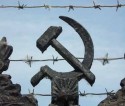 February 25 - Hungarian Victims of Communism Memorial Day: AHF Remembers. On June 13, 2000, the Hungarian Parliament adopted a resolution declaring February 25 to be the annual Memorial Day for the Victims of Communism. On this day in 1947, occupying Soviet authorities unlawfully arrested Béla Kovács, general secretary of the Independent Smallholders’ Party, who was later deported to the USSR. The parliamentary representative, who was stripped of his immunity, spent eight years in prison and labor camps and died in 1959, aged 51. [read more] February 25 - Hungarian Victims of Communism Memorial Day: AHF Remembers. On June 13, 2000, the Hungarian Parliament adopted a resolution declaring February 25 to be the annual Memorial Day for the Victims of Communism. On this day in 1947, occupying Soviet authorities unlawfully arrested Béla Kovács, general secretary of the Independent Smallholders’ Party, who was later deported to the USSR. The parliamentary representative, who was stripped of his immunity, spent eight years in prison and labor camps and died in 1959, aged 51. [read more]
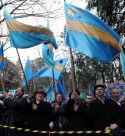 March 10: Székely (Szekler) Independence Day! AHF congratulates the Székely people on their independence day and echoes their call for autonomy. A
thousand years of nation building successfully delineated groups
based on culture, religion, geography, and other attributes to create
the countries with which we are so familiar. While some Western European
nations would continue power struggles and princely battles and civil
wars, Hungary, founded in 896, was a peaceful multi-ethnic state for over a
1000 years and her borders were virtually unchanged.... Until 1920. March 10: Székely (Szekler) Independence Day! AHF congratulates the Székely people on their independence day and echoes their call for autonomy. A
thousand years of nation building successfully delineated groups
based on culture, religion, geography, and other attributes to create
the countries with which we are so familiar. While some Western European
nations would continue power struggles and princely battles and civil
wars, Hungary, founded in 896, was a peaceful multi-ethnic state for over a
1000 years and her borders were virtually unchanged.... Until 1920.
"The greatest catastrophe to have befallen Hungary since the battle of Mohacs in 1526," the Treaty of Trianon in 1920, was extremely harsh on Hungary and unjustifiably one-sided. The resulting "treaty" lost Hungary an unprecedented 2/3 of her territory, and 1/2 of her total population or 1/3 of her ethnic-Hungarian population, including the Székely (Szekler) Hungarians. Add to this the loss of all her seaports, up to 90% of her vast natural resources, industry, railways, and other infrastructure. Millions of Hungarians saw borders arbitrarily redrawn around them, without plebiscites, ignoring President Wilson's lofty goal of national self-determination.
[Read more] about issues in Rumania.
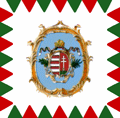 March 15: Hungarian Memorial Day (Nemzeti ünnep) and Commemoration of the 1848 War of Independence. Kossuth
Lajos (Louis) (b. 1802, d. 1894, pronounced co-shoot luh-yôsh) was Governor of Hungary during fight for independence and democracy which
was eventually defeated by the union of the royalist Austrian Habsburg
and Russian Czarist Armies (1848 - 1849). Kossuth envisioned a federation
in the Kingdom of Hungary in which all nationalties participated in a
vibrant democratic system based on fundamental democratic principles such
as equality and parliamentary representation.The bloody conflict eventually
led to a great compromise known as the "Austro-Hungarian Empire,"
in which Hungary gained some autonomy, although Kossuth would have no
part in it and demanded full indepependence until his death. It also set the seeds for her dismemberment after WWI.[read more] about Louis Kossuth and this historic struggle. March 15: Hungarian Memorial Day (Nemzeti ünnep) and Commemoration of the 1848 War of Independence. Kossuth
Lajos (Louis) (b. 1802, d. 1894, pronounced co-shoot luh-yôsh) was Governor of Hungary during fight for independence and democracy which
was eventually defeated by the union of the royalist Austrian Habsburg
and Russian Czarist Armies (1848 - 1849). Kossuth envisioned a federation
in the Kingdom of Hungary in which all nationalties participated in a
vibrant democratic system based on fundamental democratic principles such
as equality and parliamentary representation.The bloody conflict eventually
led to a great compromise known as the "Austro-Hungarian Empire,"
in which Hungary gained some autonomy, although Kossuth would have no
part in it and demanded full indepependence until his death. It also set the seeds for her dismemberment after WWI.[read more] about Louis Kossuth and this historic struggle.
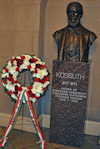 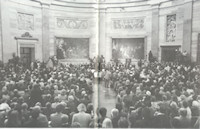 The Louis Kossuth Bust in the United States Capitol - March 15, 1990 -
A Gift to the People of the United States from the American Hungarian Federation: To celebrate and commemorate the friendship and shared values between the people of the United States and those of Hungarian descent, The American Hungarian Federation commissioned a bronze bust of Lajos Kossuth and offered it to U.S. Congress. The Louis Kossuth Bust in the United States Capitol - March 15, 1990 -
A Gift to the People of the United States from the American Hungarian Federation: To celebrate and commemorate the friendship and shared values between the people of the United States and those of Hungarian descent, The American Hungarian Federation commissioned a bronze bust of Lajos Kossuth and offered it to U.S. Congress.
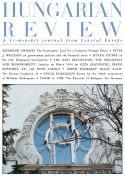 March 19, 1944: Nazi Germany Invades Hungary March 19, 1944: Nazi Germany Invades Hungary
Frank Koszorus writes in Hungarian Review:
"Reflections on March 19, 1944 and Its Aftermath:
A Perfect Storm of Tragedy and Folly," Volume V, No. 2:
The American Hungarian Federation's statement regarding the occupation of Hungary by Hitler on March 19, 1944 and its horrific consequences: "We are concerned that a political agenda has replaced a debate based on historical facts relating to the Hungarian Holocaust and Nazi Germany's invasion and occupation of Hungary," said Frank Koszorus, Jr., the Federation's president. "We condemn not only whitewashing but the blackening of this historical record as well. Both forms of revisionism does a great disservice to the memory of the victims of evil and those who opposed it at a treacherous time in Hungary's history. These considerations prompted us to issue our statement," he added. [read more]
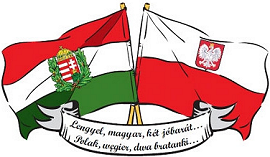 March 23, Hungarian-Polish Friendship Day! The historic friendship between the Polish and Hungarian peoples is reflected in a popular bilingual proverb from the 1700's: "Polak, Węgier, dwa bratanki / I do szabli, i do szklanki / Oba zuchy, oba żwawi / Niech im Pan Bóg błogosławi." ("Lengyel-magyar két jó barát / Együtt harcol s issza borát / Vitéz s bátor mindkettője / Áldás szálljon mindkettőre.") March 23, Hungarian-Polish Friendship Day! The historic friendship between the Polish and Hungarian peoples is reflected in a popular bilingual proverb from the 1700's: "Polak, Węgier, dwa bratanki / I do szabli, i do szklanki / Oba zuchy, oba żwawi / Niech im Pan Bóg błogosławi." ("Lengyel-magyar két jó barát / Együtt harcol s issza borát / Vitéz s bátor mindkettője / Áldás szálljon mindkettőre.")
[read more] on Wikipedia
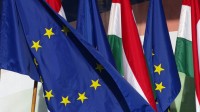 May 1: After 84% in the 2003 referendum voted in favor of joining the EU, Hungary would become a member May 1, 2004, 15 years after emerging from Soviet Communist domination. The question voted on in the referendum was: "Do you agree that Hungary should become a member of the European Union?" Hungarian: Egyetért-e azzal, hogy a Magyar Köztársaság az Európai Unió tagjává váljon? May 1: After 84% in the 2003 referendum voted in favor of joining the EU, Hungary would become a member May 1, 2004, 15 years after emerging from Soviet Communist domination. The question voted on in the referendum was: "Do you agree that Hungary should become a member of the European Union?" Hungarian: Egyetért-e azzal, hogy a Magyar Köztársaság az Európai Unió tagjává váljon?
2014 marked the 10th anniversary of the European Union’s enlargement. The Foreign Ministers of the Czech Republic, Germany, Hungary, Poland and Slovakia issued a joint statement: "Europe was in a celebratory mood the night of 1 May 2004. When the fireworks were set off at midnight, the Oder bridge linking Frankfurt in Germany with Słubice in Poland was thronged with people as the two sides of the long divided European continent were reunited. This picture was mirrored by festivities in many other places in Europe – in the Czech Republic, Slovakia or Hungary – that moved during that special night to the centre of the European unification project. The magnificent welcome extended to the ten new members of the European Union sealed the end of the East-West divide." [read more]
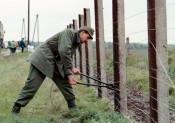 May 2, 1989 - Hungary begins dismantling the "iron curtain" fence marking the border with Austria. Thousands of East Germans cross the border to reunite with family divided for decades. The removal of Hungary's border fence with Austria in May 1989 was a historic event during the Cold War, directly prior to the revolutionary wave known as the "Autumn of Nations" and marked the first visible cracks in the Iron Curtain as Hungary began dismantling its 240 km long border fence with Austria. This allowed hundreds of East Germans on holiday in Hungary to escape to Austria and then travel safely to West Germany. The open border infuriated many Soviet Bloc governments who feared a return to a pre-Berlin Wall day when thousands of East Germans fled daily to West Berlin. Although worried, the Soviet Union took no overt actions against Hungary, taking a hands-off approach. The most famous crossing came on 19 August, when during a "friendship picnic" between Austrians and Hungarians over 900 East Germans rushed the border and escaped into Austria. May 2, 1989 - Hungary begins dismantling the "iron curtain" fence marking the border with Austria. Thousands of East Germans cross the border to reunite with family divided for decades. The removal of Hungary's border fence with Austria in May 1989 was a historic event during the Cold War, directly prior to the revolutionary wave known as the "Autumn of Nations" and marked the first visible cracks in the Iron Curtain as Hungary began dismantling its 240 km long border fence with Austria. This allowed hundreds of East Germans on holiday in Hungary to escape to Austria and then travel safely to West Germany. The open border infuriated many Soviet Bloc governments who feared a return to a pre-Berlin Wall day when thousands of East Germans fled daily to West Berlin. Although worried, the Soviet Union took no overt actions against Hungary, taking a hands-off approach. The most famous crossing came on 19 August, when during a "friendship picnic" between Austrians and Hungarians over 900 East Germans rushed the border and escaped into Austria.
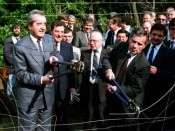 Later, in June, then-Austrian Foreign Minister Alois Mock and his Hungarian counterpart Gyula Horn, traveled to the Austrian-Hungarian border to send a signal that the division of postwar Europe was coming to an end. Shoulder-to-shoulder, wielding the bulky bolt cutters against the wire fence, they seemed to be conveying the good news that the fence was finally coming down. In many ways, this was a continuation of Hungary's historic battle for freedom and another chapter started with the 1956 Hungarian Revolution put down by a brutal Soviet invasion. [read "How Hungary Let East Germans Go" on BBC News] Later, in June, then-Austrian Foreign Minister Alois Mock and his Hungarian counterpart Gyula Horn, traveled to the Austrian-Hungarian border to send a signal that the division of postwar Europe was coming to an end. Shoulder-to-shoulder, wielding the bulky bolt cutters against the wire fence, they seemed to be conveying the good news that the fence was finally coming down. In many ways, this was a continuation of Hungary's historic battle for freedom and another chapter started with the 1956 Hungarian Revolution put down by a brutal Soviet invasion. [read "How Hungary Let East Germans Go" on BBC News]
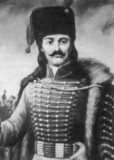 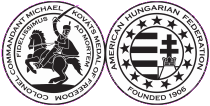 On May 11, 1779, Colonel Commandant Michael Kovats de Fabricy, Founding Father of the United States Calvary, gave his life in the American War for Independence
while leading the Continental Army cavalry he had trained in Hungarian
hussar tactics against a British siege of Charleston. The British remarked
that Kovats' forces were "the best cavalry the rebels ever had." The
American Hungarian Federation (AHF) established the Colonel Commandant
Michael Kovats Medal of Freedom to honor outstanding individuals and recognize
their life's achievements, dedication to freedom and democracy, promotion
of transatlantic relations, and meritorious contribution to society. The
award, AHF's highest honor, is open to Hungarians and non-Hungarians alike. [Read more] about Col. Kovats. On May 11, 1779, Colonel Commandant Michael Kovats de Fabricy, Founding Father of the United States Calvary, gave his life in the American War for Independence
while leading the Continental Army cavalry he had trained in Hungarian
hussar tactics against a British siege of Charleston. The British remarked
that Kovats' forces were "the best cavalry the rebels ever had." The
American Hungarian Federation (AHF) established the Colonel Commandant
Michael Kovats Medal of Freedom to honor outstanding individuals and recognize
their life's achievements, dedication to freedom and democracy, promotion
of transatlantic relations, and meritorious contribution to society. The
award, AHF's highest honor, is open to Hungarians and non-Hungarians alike. [Read more] about Col. Kovats.
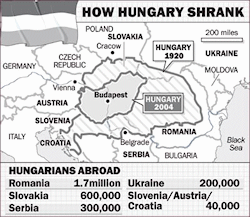 June 4 is the "Day of National Unity" and commemorates the dismemberment of Hungary's 1100 year-old borders at the lopsided Treaty of Trianon following World War I. The punitive treaty, never ratified by the United States, was extremely harsh and unjustifiably one-sided and cost Hungary
an unprecedented 2/3 of her territory, and 1/2 of her total population
or 1/3 of her Hungarian-speaking population. Add to this the loss of over 90% of her vast natural resources, industry, railways, and other infrastructure.
Hungarians, without plebiscite, woke up to borders arbitrarily redrawn around them and today, still numbering in the millions, now find themselves as "ethnic minorities" and face government-sponsored discrimination and attacks on their most basic human rights. At the time US President Wilson said: “The proposal to dismember
Hungary is absurd” and later Sir Winston Churchill said: “Ancient
poets and theologians could not imagine such suffering, which Trianon
brought to the innocent.” Others warned that a weakened, dismembered Hungary would lead to a weak, fragmented Central Europe unable to resist Soviet expansionism. We are sad to report that they were
all right. [read more] June 4 is the "Day of National Unity" and commemorates the dismemberment of Hungary's 1100 year-old borders at the lopsided Treaty of Trianon following World War I. The punitive treaty, never ratified by the United States, was extremely harsh and unjustifiably one-sided and cost Hungary
an unprecedented 2/3 of her territory, and 1/2 of her total population
or 1/3 of her Hungarian-speaking population. Add to this the loss of over 90% of her vast natural resources, industry, railways, and other infrastructure.
Hungarians, without plebiscite, woke up to borders arbitrarily redrawn around them and today, still numbering in the millions, now find themselves as "ethnic minorities" and face government-sponsored discrimination and attacks on their most basic human rights. At the time US President Wilson said: “The proposal to dismember
Hungary is absurd” and later Sir Winston Churchill said: “Ancient
poets and theologians could not imagine such suffering, which Trianon
brought to the innocent.” Others warned that a weakened, dismembered Hungary would lead to a weak, fragmented Central Europe unable to resist Soviet expansionism. We are sad to report that they were
all right. [read more]
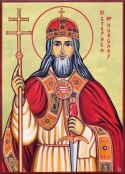 August 20th is "Saint Stephen's Day" and celebrates the foundation of the Hungarian State and King Saint Stephen the State Founder. St. Stephen the Great of Hungary (Szent István király in Hungarian) (ca. 975 – 15 August 1038), the first Christian King of Hungary, led the country into the Christian church and established the institutions of the kingdom and the church. Stephen was the last Grand Prince of the Hungarians between 997 and 1000 or 1001, and the first King of Hungary from 1000 or 1001 until his death in 1038. He was born as Vajk in Esztergom. He was the only son of Grand Prince Géza and his wife, Sarolt, who was descended from the prominent family of the gyulas. Although both of his parents were baptized, Stephen was the first member of his family to become a devout Christian. He married Gisela of Bavaria, a scion of the imperial Ottonian dynasty. [Read more] on Wikipedia. August 20th is "Saint Stephen's Day" and celebrates the foundation of the Hungarian State and King Saint Stephen the State Founder. St. Stephen the Great of Hungary (Szent István király in Hungarian) (ca. 975 – 15 August 1038), the first Christian King of Hungary, led the country into the Christian church and established the institutions of the kingdom and the church. Stephen was the last Grand Prince of the Hungarians between 997 and 1000 or 1001, and the first King of Hungary from 1000 or 1001 until his death in 1038. He was born as Vajk in Esztergom. He was the only son of Grand Prince Géza and his wife, Sarolt, who was descended from the prominent family of the gyulas. Although both of his parents were baptized, Stephen was the first member of his family to become a devout Christian. He married Gisela of Bavaria, a scion of the imperial Ottonian dynasty. [Read more] on Wikipedia.
 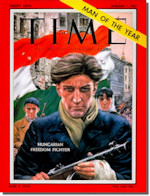 October 23 - The 1956 Hungarian Revolution was the first tear in
the Iron Curtain. Hungarians from all walks of life rose up against insurmountable
odds to fight the brutal Soviet installed Hungarian communist government.
Thousands died fighting, others tortured and executed, while 200,000 were
forced to flee. AHF's work regarding the tragic events dates
back to the early days of the revolution and thereafter assisting
tens of thousands of refugees. In 1956 the American Hungarian Federation
activated the second Hungarian Relief program for the refugees of the
1956 Hungarian Revolution, providing $512,560.00. With the support of
the American Hungarian Federation, over 65,000 refugees arrived in the
USA. Get involved and help us continue our tradition of helping our community! [Read more] about the 1956 Revolution! October 23 - The 1956 Hungarian Revolution was the first tear in
the Iron Curtain. Hungarians from all walks of life rose up against insurmountable
odds to fight the brutal Soviet installed Hungarian communist government.
Thousands died fighting, others tortured and executed, while 200,000 were
forced to flee. AHF's work regarding the tragic events dates
back to the early days of the revolution and thereafter assisting
tens of thousands of refugees. In 1956 the American Hungarian Federation
activated the second Hungarian Relief program for the refugees of the
1956 Hungarian Revolution, providing $512,560.00. With the support of
the American Hungarian Federation, over 65,000 refugees arrived in the
USA. Get involved and help us continue our tradition of helping our community! [Read more] about the 1956 Revolution!
[<< Go to All AHF News]
| The 1907 Kohányi Szózat (Appeal)
“Amerika egy millió magyarja, nemcsak hogy követeljük, de keresztül is visszük azt, hogy Magyarország népének ugyanabban a szabadságban, ugyanabban az igazságban, ugyanabban a jólétben legyen resze, mint amely szabadság, igazság, es jólét abban az Amerikában van amelynek lakósai, polgárai vagyunk.”
“We, America’s 1 million Hungarians, do not just demand, but will work to ensure that the people of Hungary may partake in the same freedom, the same justice, the same prosperity as we, citizens of America, partake.”
- Kohanyi Tihamer, AHF President, 1907
AHF HISTORY
AHF's 100 YEARS
CONGRESSIONAL DISPLAY
(by Bryan Dawson:
click on each
image for a larger version)
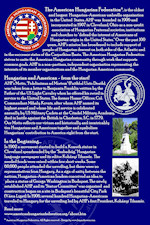
AHF in the Beginning:
1906 and Budapest's
George Washington Memorial
[read more]
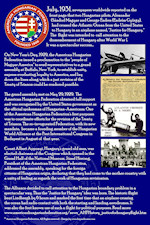
AHF and the "Justice for
Hungary" movement calling
attention to the tragedy of Trianon
[read more]
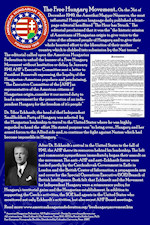
AHF, Tibor Eckhardt, and
the "Free Hungary Movement"
seeking to extract Hungary
from the Axis sphere
[read more]
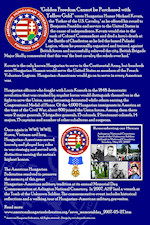
AHF Honoring our
Heroes at the Arlington
National Cemetery
[read more]
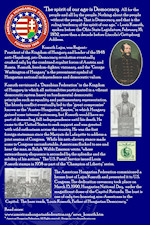
AHF and the Kossuth
Bust in the US Capitol
[read more]
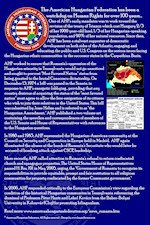
AHF as a watchdog for
human rights in Rumania
[read more]
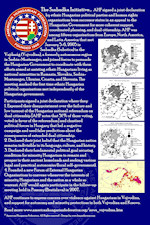
AHF as a watchdog for
human rights in Vojvodina
and the MÁÉRT movement
[read more]
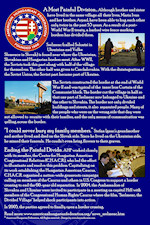
AHF as a watchdog for
human rights in Carpatho-Ukraine:
The Divided Village of Szelmenc
[read more]
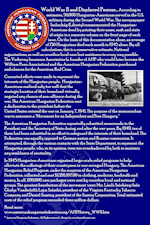
AHF relief efforts during WWII
[Read More]
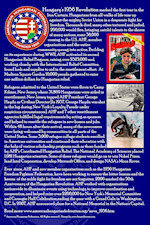
AHF relief efforts during
the 1956 Hungarian Revolution
[read more]
Join online!

Help us help the community!
Support us securely online.
[<< back to all AHF news] |



